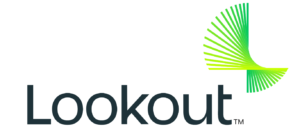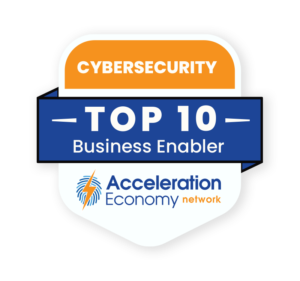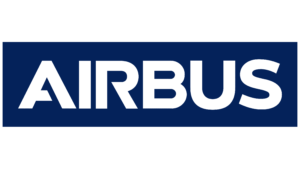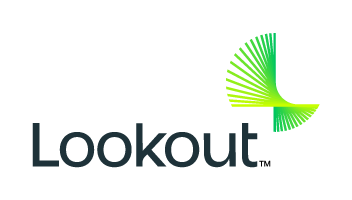With users accessing company networks from a complex array of devices and locations, the lines between business and personal data grow more blurry by the day. Today, security strategies and tools must protect both personal devices and corporate data precisely because so many corporate systems are accessed remotely.
Lookout provides a unified security platform that safeguards everything from mobile devices to data stored in the cloud, including the connection from the device to the cloud; data within applications — on premises or in the cloud — is protected at a granular level through centralized policies.
Which companies are the most important vendors in cybersecurity? Click here to see the Acceleration Economy Top 10 Cybersecurity Shortlist, as selected by our expert team of practitioner analysts.
Who Is Lookout?
Lookout began as a security company focused on protecting mobile phones. Before officially launching the company in 2007, Lookout’s founders — John Hering, Kevin Mahaffey, and James Burgess — gained visibility by demonstrating Bluetooth vulnerabilities using a custom-made BlueSniper data extraction gun.
The team even took the device to the 2007 Academy Awards, where it harvested information wirelessly, in real-time, from hundreds of celebrities’ mobile phones to highlight the weaknesses in Bluetooth technology. In 2013, after achieving $55 million in a strategic financing round led by Deutsche Telekom, the Lookout team began to expand its corporate and technology focus into enterprise security.

Lookout Chairman and CEO Jim Dolce joined the company in 2014 and set about redefining and expanding its product line as well as its target customer. Before Lookout, Dolce founded four successful tech companies.
Alongside Dolce in the C-suite, veteran network security engineer Sundaram Lakshmanan is Lookout’s CTO and Head of Engineering for secure access service edge (SASE) products. Aaron Cockerill, former VP of Mobile Technologies at Citrix, is the company’s Chief Strategy Officer.
In total, the company has received $432 million in venture-capital funding.
What Does Lookout Do?
Lookout has built on its foundation of mobile security technology in order to respond to the demands of businesses in an increasingly distributed operating environment where the corporate perimeter is either fluid or non-existent.
“The way we remediate if a device is under attack is less around stopping what’s happening on the mobile device, although we do that, and more around protecting the enterprise data that the mobile device can access,” Cockerill said

“For example, if a user is sent a package that causes them to install surveillance ware and
Lookout was installed on the device, after detecting the threat and notifying the user, Lookout would protect the organization by stopping or restricting the access of that mobile device to corporate data,” he added.
Based on geographic location, user, device, or other trait, Lookout enables organizations to make calculated decisions according to risk. The technology isn’t binary. If, for example, a user is accessing a business system from an unknown location, customers have security controls that mean the user can still access the data they need to make timely decisions.
“If you can simplify your security strategy, then you’re likely to make fewer mistakes. One of the things we do is run all of your private and cloud applications and access to the Internet through the same proxy architecture,” says Cockerill. “This means, for example, you could write a PII (personal identifiable information) policy once and that would protect the PII coming in and going out of your organization across all of those paths.”
The Lookout Cloud Security Platform enables organizations to enforce security policies and monitor endpoints from a single, centralized dashboard for administration. As a result, cybersecurity is streamlined, enabling administrators to avoid managing the complexity that arises when users access data from countless endpoints.
There are two ways to access cloud-based services the Lookout platform, Cockerill explained. The first is via proxy, where all the traffic goes through a Lookout security assessment, and the other is monitoring, via API, what’s happening in the cloud service you are accessing.
“From a proxy perspective, a forward proxy is where the device is configured to connect all the time through cloud security,” he says. “Conversely, a reverse proxy requires no configuration on the endpoint, and that’s what we do typically for unmanaged devices where you can’t direct the traffic from the device.”
If an employee is accessing a bank or conducting other personal business from a managed device, that the traffic would go through Lookout to ensure it’s safe, with the platform filtering out malicious code and monitoring for transport of any sensitive data, Cockerill said.
Lookout’s origins in the mobile workspace are an advantage today in particular, since “now we have a mobile workforce,” and the company is “used to operating in that environment.” This is one of Lookout’s key differentiators.
Chris Hughes, Acceleration Economy Analyst, CISO

Lookout’s enterprise security platform combines security service edge (SSE) and endpoint security while providing four services: Secure Cloud Access, Secure Internet Access, Secure Private Access, and Mobile Endpoint Protection. The four services are explained in greater detail below:
- Lookout Secure Cloud Access: this Cloud Access Security Broker (CASB) feature protects any data stored in a company’s cloud apps using application programming interface- (API-) based security and enforcing unified policies.
- Lookout Secure Internet Access: a cloud-delivered Secure Web Gateway (SWG) that includes Firewall as a Service (FWaaS), built on zero-trust principles to protect users, underlying networks, and corporate data from internet-based threats and data leakage.

- Lookout Secure Private Access: Enables users to connect to private apps on-premises and in the cloud securely through cloud-delivered zero trust network access (ZTNA). It provides visibility into apps and the data that flows through them so they can give users managed access to the specific apps they need to do their jobs. Unlike a VPN, Lookout Secure Private Access connects users to applications and not the network.
- Lookout Mobile Endpoint Protection (MES): Based on data from hundreds of millions of apps and mobile devices, MES ensures organizations can stay ahead of the curve regarding the latest cyber threats that could impact personal, managed, and unmanaged iOS, Android, and Chromebook devices. It protects against phishing campaigns, malicious apps, and risky network connections.
Customers That Lookout Has Dazzled
To date, Lookout has worked with more than 500 organizations globally and secured the personal data of upwards of 200 million individuals. One significant customer Lookout has supported is the aviation giant Airbus.
In the wake of the Covid-19 pandemic, Airbus was confronted with a new operating environment where its 100,000-plus workforce was relying more on corporate-issue iOS and Android endpoints to carry out its duties.
Airbus wanted a solution that enabled zero trust access and monitoring capabilities. The company deployed Lookout Mobile Endpoint Security to tackle the problem. Now, Airbus has extended its zero-trust strategy to all corporate mobile endpoints. The company has full visibility across the entirety of its mobile threat landscape, and remote employees are benefitting from Lookout’s easy-to-use security interface.
Why Lookout Is a Top 10 Cybersecurity Company
Lookout demonstrates how a cybersecurity company can build upon its core technology expertise to address diverse threats presented from a changing business environment as well as growth in use cases including hybrid work. Lookout has been selected as a top 10 cybersecurity business enabler because:
- Building on a mobile-first solution, Lookout has addressed the need for a dynamic approach to data protection in an environment where a “perimeter” can be a moving target
- The company enables growth and business innovation by managing secure access to critical data assets on a granular basis
- Its cloud-native architecture enables Lookout customers to access and manage their security profile from anywhere
- Consolidated security features streamline cybersecurity provision, simplifying the process of protecting internal and external networks
- A roster of major customers validate the company’s technology strength and positioning, as well as the appeal of a comprehensive approach to security spanning endpoint to cloud.
Want more cybersecurity insights? Visit the Cybersecurity channel:












